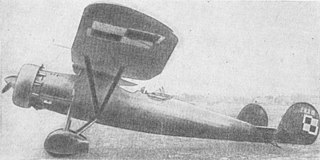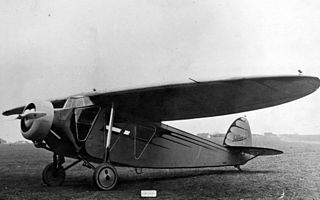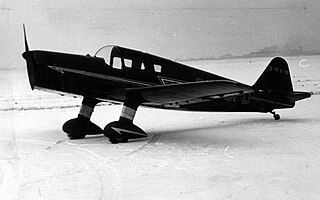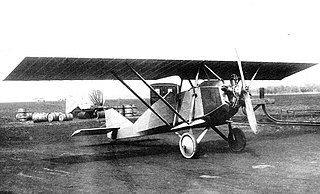
The RWD-14 Czapla was a Polish army cooperation aircraft, designed in the mid-1930s by the RWD team, and produced in the LWS factory from 1938. A series of 65 aircraft were built and most were used by the Polish Air Force observation squadrons during World War II in 1939.

The RWD-10 was a Polish aerobatics sports plane, single-seat parasol wing monoplane, used from 1933 to 1939 and constructed by the RWD team.

PZL.46 Sum (sheatfish) was a light bomber of the Polish Air Force before World War II, which, was directed to serial production in the spring of 1939. These planes were in production, but the Polish industry did not manage to produce them before the outbreak of the war.

The PZL.38 Wilk (wolf) (PZL-38) was a Polish fighter-bomber developed and manufactured by PZL state factory in 1937.

The PWS-10 was a Polish fighter aircraft, constructed in the PWS. It was the first Polish-designed fighter to enter serial production.

The PWS-19 was a Polish reconnaissance and bomber plane prototype of the 1930s, constructed in the PWS.

PZL.12 (PZL-H) was a prototype of a Polish amphibious flying boat designed and built in 1931 by Zygmunt Puławski, a pioneering Polish designer. He was killed in a crash involving this design.
The PZL.48 Lampart (leopard) was a Polish heavy fighter-bomber design, that remained only a project, owing to the outbreak of World War II.
The Bartel BM 6 was a Polish biplane trainer fighter aircraft of 1930. It did not advance beyond the prototype stage.
The Potez XV was a French single-engine, two-seat observation biplane designed as a private venture by Louis Coroller and built by Potez and under licence in Poland.

The PWS-20 was a Polish single-engine high-wing passenger aircraft for 6 passengers, built in PWS factory in 1929, that remained a prototype. It was the first Polish passenger plane.

The PWS-1 was a Polish two-seat fighter and reconnaissance aircraft, constructed by Podlaska Wytwórnia Samolotów (PWS) in 1927, which remained a prototype.

The JD-2 was a Polish sports plane of 1926. It was the first sports plane designed in Poland, that was built in a small series.

The RWD-16 was a Polish two-seat low-wing sports plane of 1936, constructed by the RWD team, that remained a prototype.
The Lublin R-XII was the Polish three-seat sports and touring aircraft, designed in 1930 in the Plage i Laśkiewicz factory in Lublin, that remained a prototype.

The Lublin R-XI was the Polish passenger plane for 4 passengers, designed in 1930 in the Plage i Laśkiewicz factory in Lublin, that remained a prototype.

The RWD-19 was a Polish two-seat low-wing sports aircraft of 1938, constructed by the RWD bureau.

The Potez 39 was a French two-seat single-engined parasol wing monoplane reconnaissance and observation aircraft of the 1930s.

The PWS 5 or PWS 5t2, was a multi-seated Polish liaison aircraft, developed in 1928 by PWS.

The PWS 3 was a Polish sport aircraft, developed in 1927 by PWS, which remained a prototype.
















